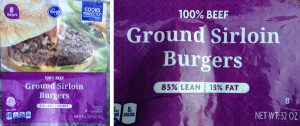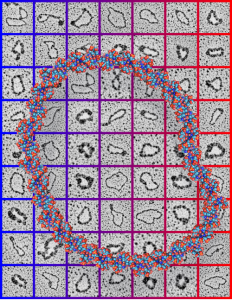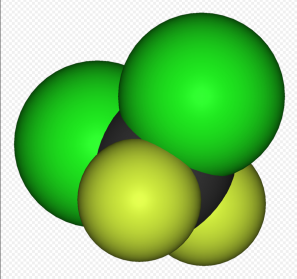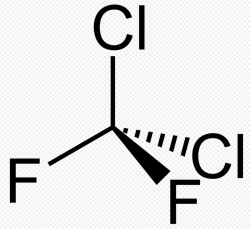It is a difficult task, to say the least, to keep big companies like Walmart, Kroger, Macy’s, Ford, all the biggies, none is exempt, in line. Who can do it. We can’t, except by one phone call at a time. Seemingly useless gestures, and they probably really are useless, but I am compelled to speak sometimes. THis is one time. I look at beef as an “occasional” treat, most of you do not, but the data are clear, eating lots of red meat just does contribute to disease risk. I did get this package of ground beef patty bag, how I got it is sort of irrelevant, but I read the front, 85% lean, 15% fat. I have seen that add at their meat counter, it seemed reasonable enough. BUT, look at the label. Photos of front, of claim for “lean-ness” and compare that with the nutrition label on the back…. WHAT…. the product is not 15% fat at all, but 62% fat… do the math. (in all due respect and honesty, kroger did call me back with the information i requested — this doesn’t mean that the labeling is not deceptive, just in accordance with the FDA, and it means at least they responded via customer service — it took about a week however)
 I called Kroger, and of course, got the run-a-round. What is there about this advertising that is fair…. nothing. You read the front, it gives you percent lean (at least that is what they want you to think) and in fact there are some odd calculations going on here. What I gleaned (albeit kind of piecemeal… cause I think he was hedging) from the kroger customer service call…. is that they take a piece of meat that is 85% lean, and then add an additional 15% fat…. what… that is not what this label says, but it is reflected in the nutrition label. He claimed the labeling was according to FDA USDA guidelines…. if this is so, and I doubt that they are restricted from explaining the calculation on the package so that people like me are not “hoodwinked”… then we can only laugh at everyone at the FDA and USDA together. How sad… and you and I pay, we pay for the fraud, we pay for the pain and suffering of our families, we pay for the added health care, and we also pay Kroger profits, and we pay for the salaries of the FDA and USDA staff. We pay way way too much.
I called Kroger, and of course, got the run-a-round. What is there about this advertising that is fair…. nothing. You read the front, it gives you percent lean (at least that is what they want you to think) and in fact there are some odd calculations going on here. What I gleaned (albeit kind of piecemeal… cause I think he was hedging) from the kroger customer service call…. is that they take a piece of meat that is 85% lean, and then add an additional 15% fat…. what… that is not what this label says, but it is reflected in the nutrition label. He claimed the labeling was according to FDA USDA guidelines…. if this is so, and I doubt that they are restricted from explaining the calculation on the package so that people like me are not “hoodwinked”… then we can only laugh at everyone at the FDA and USDA together. How sad… and you and I pay, we pay for the fraud, we pay for the pain and suffering of our families, we pay for the added health care, and we also pay Kroger profits, and we pay for the salaries of the FDA and USDA staff. We pay way way too much.
 and per their own website…. what the heck is “USER MODIFIED FOOD”
and per their own website…. what the heck is “USER MODIFIED FOOD”
Wondering how many calories are in Ground Round 100% Pure Beef?
Manufactured by Kroger
User modified food.”
COMMENT: Kroger did call me back with info…. discrepancies lie in the front page units of measure (grams) and the back page calculation units of measure (calories). I should have figured that out myself, nevertheless… the front page is deliberately used to misadvise individuals on the fat content. fat=9 calories per gram protein=4 calories per gram, which I knew, but didn’t put 2 and 2 together. DID YOU?











